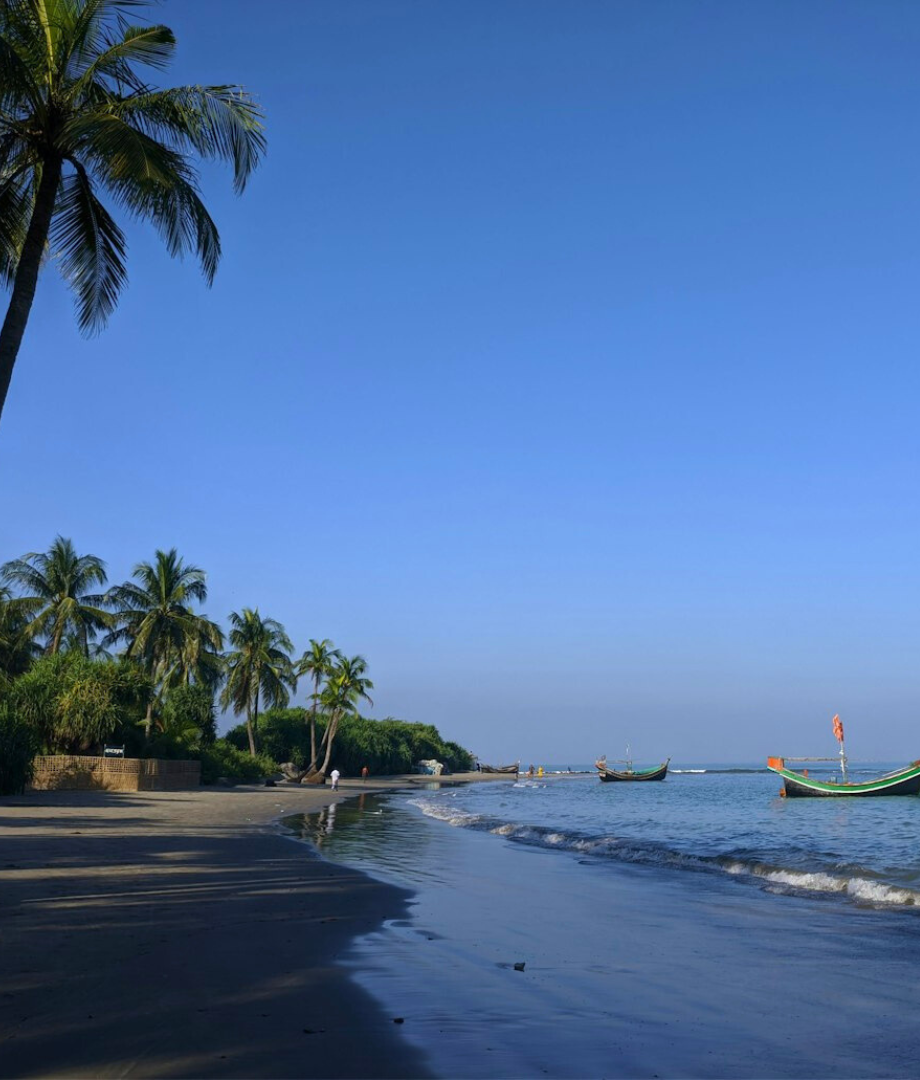A Comprehensive Saudi Arabia Travel Guide
Over 18 million international tourists travel to Saudi Arabia annually. They are driven by both religious pilgrimages and increasing tourism initiatives under Vision 2030. After the Saudi eVisa system started in 2019, Saudi Arabia's travel industry has grown quickly.
Now, over 7,000 tourism sites are open to non-religious visitors. For first-time travellers, it is important to learn about this new and changing place. Let’s start by understanding the rules and culture, and the travel basics before you arrive.
First-Timer's Guide to Travelling in Saudi Arabia
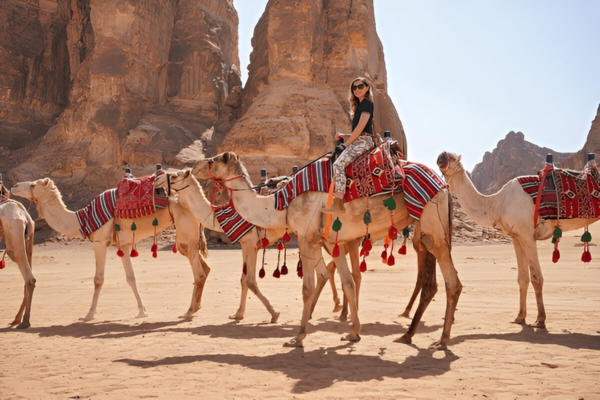
Travelling to Saudi Arabia requires clear planning. First-time travellers should know about the entry procedures, best travel times, currency use, safety tips, and necessary documents.
People from over 50 countries can apply online for touring Saudi Arabia. This makes short-term travel much easier. In 2023, over 1.5 million tourists entered using eVisas, highlighting the system’s rapid adoption.
Entry Visas and Arrival Process
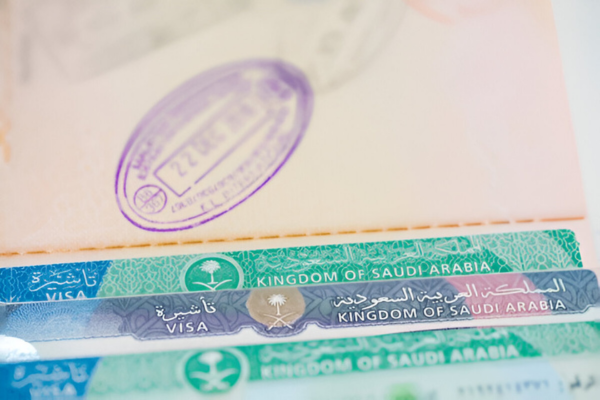
Travellers must hold a valid passport with six months’ validity and obtain a visa before entry. The Saudi eVisa is for tourism. It allows multiple entries and is valid for one year.
You can stay for up to 90 days each time you visit. The visa fee is approximately $117 USD, including travel insurance.
Upon arrival, immigration officers verify biometric data and visa details. Entry points include major international airports in Riyadh, Jeddah, and Dammam, all equipped for electronic visa processing.
Citizens from countries outside the eVisa program must apply through embassies. Visitors entering for Hajj require specific Hajj visas and must travel during set periods.
Best Time to Travel
The best time to travel to Saudi Arabia is between October and March, when temperatures range from 15°C to 28°C.
These months offer cooler weather, suitable for exploring cities, deserts, and UNESCO sites like Al-Hijr (Madain Salih). Summer temperatures can exceed 45°C, especially in inland regions.
Key relgious events influencing travel timing include:
- Ramadan (dates vary, once a year): travel slows, but cultural experiences intensify.
- Hajj (Dhul Hijjah): only pilgrims may enter Mecca and Medina.
Key tourist events influencing travel timing include:
Saudi Seasons:
- Riyadh Season (March-April)
- Jeddah Season (April-May)
- Sharqiah Season (May-June)
- Aseer Season (June-July)
- Taif Season (July-August)
- Diriyah Season (August-September)
- Al Ula Season (October)
Choose off-peak months for lower prices and reduced crowds at tourist spots.
Currency, Safety, and Travel Documentation
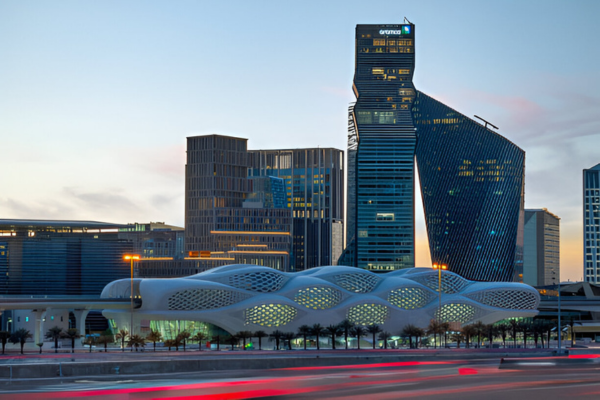
The local currency is the Saudi Riyal (SAR). As of early 2025, 1 USD equals approximately 3.75 SAR. Credit cards are widely accepted in cities, while remote areas may prefer cash. Currency exchange is available at airports, malls, and hotels.
Saudi Arabia maintains a Level 2 Travel Advisory from the U.S. Department of State, suggesting standard caution. Surveillance, police presence, and road infrastructure are strong in major cities. Female travellers must follow the public dress code and stay in permitted accommodations.
Required documents include:
- A printed or digital visa confirmation
- Travel health insurance
- Proof of accommodation and return flight
- A yellow fever certificate if arriving from affected countries
Traveller's Guide to Cultural Sensitivity in Saudi Arabia
Understanding local customs is essential for respectful travel in Saudi Arabia, especially for first-time visitors. Religion, gender norms, and social behaviors all shape the travel experience.
Yes, Saudi Arabia is modernisng, but it retains distinct traditions that influence how visitors should behave in public spaces.
In 2023, tourist satisfaction rates were over 91%, according to the Saudi Tourism Authority. This shows the country's readiness for international travel.
Dress Codes and Religious Customs
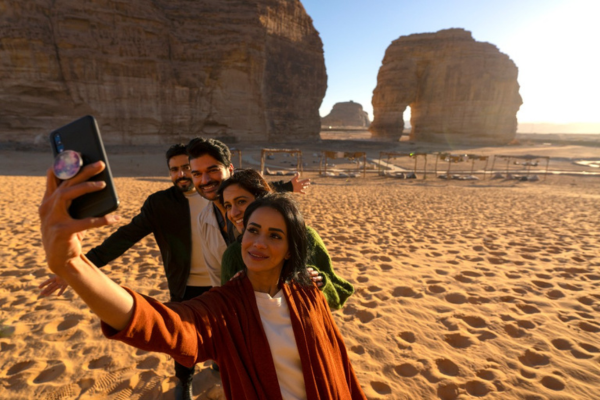
Saudi Arabia is known to enforce a conservative dress code rooted in Islamic principles. Such regulations have relaxed in recent years, especially for foreign travellers. But modest attire remains expected.
Women are not legally required to wear an abaya, but many still choose to wear one in public. Covering the shoulders and legs is standard. Men should avoid shorts and sleeveless shirts in public areas. These rules can be overlooked in a few tourist spots. Such as tourst friendly beaches, international events or concerts, hotel and resorts etc.
Religious customs shape public life. Daily prayer (salat) occurs five times, during which many shops temporarily close. Friday is the official day of rest, and public institutions often operate reduced hours.
Non-Muslims cannot enter Mecca or some parts of Medina. These areas are only for religious pilgrims. Ramadan travel requires special awareness, as eating or drinking in public during daylight hours is restricted.
Gender Norms and Public Behavior
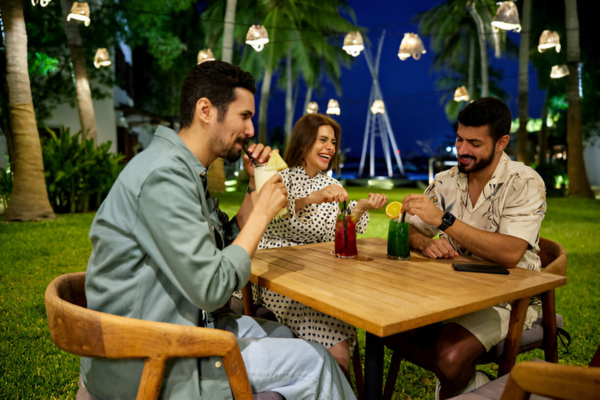
Social norms are more relaxed in Saudi Arabia’s main tourist areas. This includes Riyadh Boulevard, AlUla, or Jeddah Corniche. They are becoming increasingly aligned with international standards.
Public displays of affection are discouraged in Saudi Arabia, especially in conservative settings. But international travellers will find that mixed-gender interactions are common and accepted in hotels, restaurants, events, and entertainment zones.
Visitors aren’t expected to change their identity but are encouraged to show cultural awareness.
Moreover, the legal reforms since 2018 allow women to drive, travel without male guardians, and attend sports events and concerts.
Photography of women or families without permission is prohibited. Public behavior laws prioritize decency, calmness, and respect in all social interactions.
What Surprises Tourists Most

First-time visitors often expect strict conservatism. But they are surprised by Saudi Arabia’s urban vibrancy, hospitality, and modernisation.
Cities like NEOM and Riyadh’s Boulevard World offer global-scale entertainment zones. Plus, places like Jeddah Corniche and Qiddiya offer a diverse, international atmosphere.
Here, locals and tourists dress comfortably yet respectfully.
These venues have hosted major global events. These include WWE Crown Jewel, MDLBEAST Soundstorm music festivals, and Cirque du Soleil performances. It drew millions of international spectators.
These open, entertainment-driven areas reflect the country's shift toward a more inclusive, tourism-friendly environment—without compromising cultural respect.
Many travellers note the contrast between tradition and cutting-edge development. Coffee culture, art installations, music festivals, Formula E events have expanded rapidly since 2021.
Another common surprise is the hospitality of locals. The Saudi welcome culture, known as karam, includes offering Arabic coffee (qahwa), dates, and conversation—even to strangers.
Accommodation Guide in Saudi Arabia: Where to Stay During Your Travel
Travel across Saudi Arabia is increasingly accessible. The hospitality sector is growing fast. There will be over 310,000 hotel rooms in Saudi Arabia by 2030, as part of Vision 2030’s tourism strategy.
From budget inns to luxury coastal resorts, accommodation options are diverse in Saudi Arabia. They are aligned with international service standards, especially in major cities and tourist corridors.
Budget-Friendly Options

Saudi Arabia offers reliable budget accommodation in all key cities.
In Riyadh, Jeddah, Dammam, and Medina, travellers can find 3-star hotels, serviced apartments, and hostels priced between SAR 120–300 ($32–80) per night.
Brands like OYO, Al Eairy, and Al Muhaidib offer clean, simple, and centrally located stays. Many include Wi-Fi, AC, private bathrooms, and basic Arabic-English service.
Backpackers and short-stay travellers often use apart-hotel hybrids (called furnished units) which come with kitchenettes, weekly cleaning, and flexible check-in policies.
Luxury Resorts and Hotels

For luxury travel, Saudi Arabia now rivals global destinations.
Riyadh and Jeddah feature high-end international chains like Four Seasons, Ritz-Carlton, Rosewood, and Hyatt Regency. Prices range from SAR 900 to 2,500 ($240–$670) per night, depending on season and amenities.
In AlUla, Habitas and Banyan Tree offer desert-luxury experiences with private villas, spa services, and stargazing zones.
Along the Red Sea, resorts under the Red Sea Project are emerging as high-end coastal escapes. They offer island access, coral reef tours, and sustainability-driven design.
These resorts cater to global luxury travellers and often include English-speaking staff, airport transfers, and international dining.
Things to Keep in Mind While Booking
Booking accommodation in Saudi Arabia requires awareness of local booking rules. Unmarried mixed-gender couples, including foreigners, are now legally allowed to stay in the same room in most hotels, following 2019 legal reforms. However, some budget properties may still request documentation out of habit—always check hotel policies before booking.
Other key booking tips for travel:
- Use trustowrthy platforms (such as ShareTrip) or Saudi-based apps with English-language support
- Book early during high seasons: Ramadan, Hajj, Riyadh Season, Jeddah Season, or AlUla events
- Confirm women’s accommodation rules if travelling solo—most hotels accept solo female guests, but rural stays may differ
- Double-check check-in times and ID requirements—a passport and visa are usually mandatory
Hotel staff in city areas are used to international guests and follow global hospitality standards. Tourist-rated properties often offer prayer mats, multilingual service, and proximity to major transport hubs or entertainment zones.
Where to Travel in Saudi Arabia: Things to Do for First-Timers
Saudi Arabia spans over 2.1 million square kilometers. It offers historical cities, UNESCO heritage sites, Red Sea coastlines, and futuristic entertainment hubs. Each destination offers different travel styles.
You can choose from cultural experiences to luxury resorts. This makes it easy to create a meaningful travel plan.
Cities: Riyadh, Jeddah, Medina, AlUla
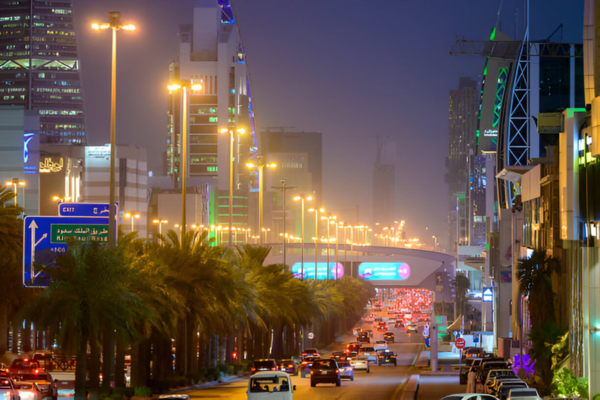
Riyadh is the capital of Saudi Arabia that blends tradition and modernity. Key sites include Masmak Fortress, the National Museum, and Kingdom Centre Tower.
The Riyadh Season saw 19 million tourists in 2024. This surge is driven by events like Riyadh Season, which features global concerts, sports, and exhibitions.
Jeddah serves as the Red Sea gateway. This city is a top coastal destination with UNESCO-listed Historic Jeddah (Al-Balad), and the Jeddah Waterfront. It's also the launch point for Red Sea diving excursions and island hopping.
Medina is one of Islam’s two holiest cities. Non-Muslims may not access certain central areas in Medina. But nearby sites like the Hejaz Railway Museum and Quba Mosque remain accessible. Cultural travellers love visiting these spots.
AlUla has emerged as a tourism centerpiece, hosting over 250,000 visitors in 2023. Its key attraction is Hegra (Al-Hijr). It is Saudi Arabia’s first UNESCO site, with over 100 Nabataean tombs carved into sandstone.
Modern Entertainment Spots

Saudi Arabia's entertainment zones have expanded under Vision 2030. They attract global performers, sporting events, and immersive experiences.
Boulevard World in Riyadh spans over 900,000 sqm, offering international pavilions, rides, and tech-driven attractions.
Qiddiya, a future mega entertainment city, will feature Six Flags, a Formula 1 racetrack, and arts districts.
Other venues include Winter Wonderland, MDLBEAST Soundstorm, and AlUla’s Maraya Concert Hall. They now place Saudi Arabia on the global event map, with tourist footfall increasing year-on-year.
Day Trips and Heritage Sites
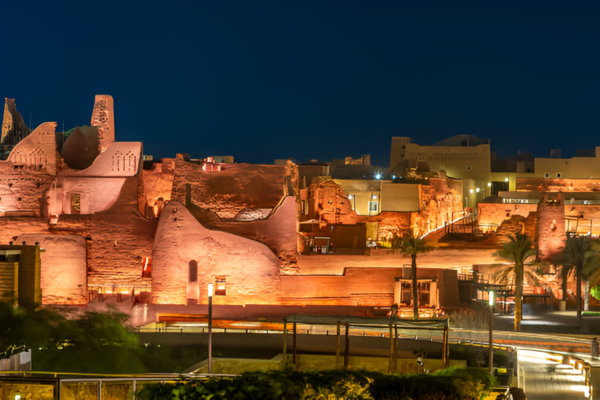
Short trips reveal Saudi Arabia’s layered history. Diriyah, which is just outside Riyadh, is the birthplace of the first Saudi state. It is being redeveloped into a major cultural tourism site.
Rijal Almaa, in the Asir Region, features stone tower houses and a living heritage museum.
UNESCO sites like At-Turaif, Hail Rock Art, and the Al-Ahsa Oasis present ancient inscriptions, archaeological remnants, and desert agriculture still in practice. These are ideal for day trips aligned with cultural travel routes.
Desert Experiences and Coastlines

Saudi Arabia’s travel ecosystem includes expansive desert regions and 1,800 km of Red Sea coastline. The Empty Quarter (Rub' al Khali) offers structured dune excursions, stargazing camps, and camel caravans. The Edge of the World (Jebel Fihrayn), located near Riyadh, is a dramatic cliff formation popular for hiking.
Along the coast, The Red Sea Project is developing 90 islands into luxury eco-resorts. Yanbu and Farasan Islands offer coral reef diving and marine life observation. These coastal areas draw over 1.2 million annual visitors, especially in winter months.
Safety and Transportation Guide in Saudi Arabia for First-Timer Traveller’s
Vision 2030 is influencing a surge in tourism, infrastructure and smart city development. Saudi Arabia now offers reliable and modern options for navigating the country. Travellers can easily access heritage zones, remote landscapes, and tourist attractions without facing difficulty.
The Kingdom ranks among the safest countries in the region. The 2025 Numbeo Safety Index places Riyadh and Jeddah above regional averages in public safety and transport security.
How to Move Around: Taxis, Uber, Local Flights
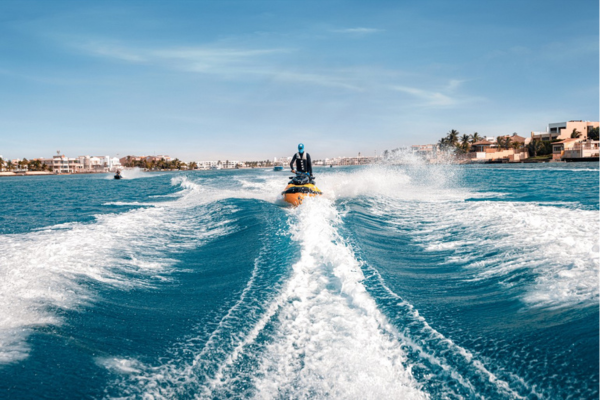
Travel within Saudi Arabia is streamlined through a combination of things. It includes app-based ride services, well-developed highways, and a growing domestic flight network.
Uber and Careem operate in all major cities and are the most convenient options for tourists. Prices are fixed and visible in-app, eliminating fare disputes. For short distances, licensed taxis are available, though not always metered—apps are preferred for transparency.
Intercity travel is supported by low-cost carriers such as Flyadeal and Flynas, which connect over 28 domestic airports.
Flights between Riyadh, Jeddah, Medina, Abha, and AlUla are frequent and cost-efficient. For example, a one-way ticket from Riyadh to Jeddah averages SAR 250–350 ($65–90) and takes under two hours.
Buses operated by SAPTCO also connect cities, with women-only sections and bilingual service available.
Rules for Solo Travellers, Especially Women
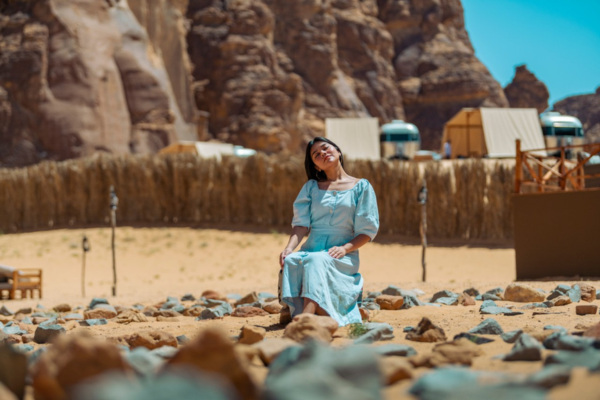
Solo travel in Saudi Arabia is safe and increasingly common. Legal reforms since 2018 allow women to travel independently without male guardianship, drive cars, and check into hotels alone.
In 2023, 37% of inbound solo travellers were women. It was a notable rise attributed to regulatory modernisation and high safety ratings.
Hotels, malls, museums, and public transport accommodate female travellers with designated areas where needed. But most urban locations are fully mixed-gender.
Dress codes require modest clothing but do not mandate abayas.
Women should avoid walking alone in unlit or remote areas at night as a general travel safety rule. This is not a local-specific risk.
Staying Connected and Protected
Saudi Arabia’s well-monitored cities allow travellers to stay digitally and physically secure. Tourists can purchase prepaid SIM cards from major providers (STC, Zain, Mobily) at the airport.
A local number is useful for a number of things. This includes booking ride services and navigating with Google Maps. It also makes accessing local apps like Tawakkalna (public service access) and Absher (government e-services) easier.
Most SIM plans start at SAR 30–100 and include generous data packages.
Security presence is visible in public spaces, and CCTV coverage is extensive.
Emergency numbers are easy to access: 911 for police emergencies in Riyadh, Makkah, and Eastern provinces. And, 999 for police emergency in all other provinces. 997 is for medical help.
Many tourist zones have multilingual police assistance, and local people often help when asked. With proactive urban safety measures and tourist-ready transport systems, Saudi Arabia continues to improve its travel environment for international visitors.
Travel Essentials and Packing List for First-Timers in Saudi Arabia
Saudi Arabia spans multiple climate zones. These zones span from the Red Sea coast to the Empty Quarter desert. So, efficient packing requires region-specific and activity-specific planning.
Knowing what to bring, and what to leave behind, directly improves travel safety, comfort, and compliance.
Climate-Based Clothing Advice
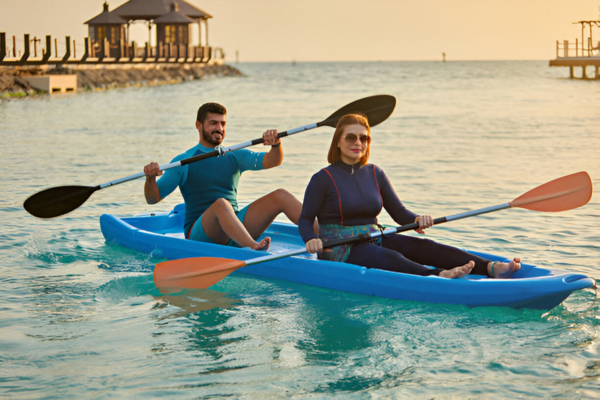
Saudi Arabia’s climate is mostly arid. Temperatures range from 8°C on winter nights to over 45°C during summer days.
Lightweight, breathable fabrics like cotton and linen are ideal for daywear in Saudi Arabia’s warm climate. Between November and March, evenings can be cooler especially in desert regions like AlUla or Riyadh. So packing a light jacket or shawl is practical.
Modest dress is encouraged in public, such as long trousers for men and loose-fitting clothing for women. But such expectations are becoming increasingly flexible in modern tourist zones.
Sun protection is critical. Bring UV-rated sunglasses, SPF 50 sunscreen, and a wide-brimmed hat. They come in handy when visiting open-air heritage sites like AlUla or Hegra.
What Not to Bring: Prohibited Items for Travel to Saudi Arabia
While Saudi Arabia enforces clear import rules—like many travel destinations—most are easy to follow with basic awareness. These policies are designed to streamline airport processing, protect public health, and respect local customs, not to deter tourism.
The following items are restricted at entry:
- Alcohol and liquors
- Pork products
- Religious materials intended for distribution (personal copies for private use are fine)
- E-cigarette liquids with unregulated nicotine content
- Drones, unless pre-approved by the General Authority of Civil Aviation (GACA)
- Prescription medications without documentation (bring original packaging and prescriptions)
Saudi Arabia's airport systems are modern, efficient, and equipped with digital customs screening. Visitors consistently report smooth arrivals. If you're prepared with the right documentation and respect basic guidelines, arrival is fast and stress-free.
Tourist-friendly areas reflect how far the country has progressed in welcoming international travellers with globally familiar experiences. These areas include Riyadh Season zones, AlUla’s Maraya, Red Sea resorts, and many more.
The rules exist, but they don’t limit your travel—they support a safe, structured environment for exploration.
Personal Care and Electronics Checklist
Saudi Arabia has a 230V, 60Hz electrical system and uses the Type G plug (same as the UK). A universal adapter is essential.
Mobile internet is fast and reliable—Saudi Arabia ranks 7th globally in mobile internet speed. So carrying a smartphone with GPS, translation apps, and ride-hailing apps (Uber, Careem) is vital.
Recommended electronics and personal items:
- Unlocked phone for local SIM (STC, Zain, Mobily)
- Power bank (especially for day trips in desert areas)
- Travel-size toiletries (larger bottles may not be available everywhere)
- Reusable water bottle (tap water is desalinated and safe in most cities)
- Personal medications with documentation
Most modern malls, airports, and hotels offer essentials. But having a complete setup supports smoother travel across cities, coasts, and cultural zones.
What Not to Do During A Saudi Arabia Travel: Mistakes First-Timers Make
Saudi Arabia welcomes millions of tourists every year. With Vision 2030 accelerating infrastructure, events, and hospitality, the Kingdom is prepared. But understanding local dynamics is key to a better trip. The goal is not to restrict your experience, but to make travel smoother, safer, and more culturally aware.
Cultural Missteps
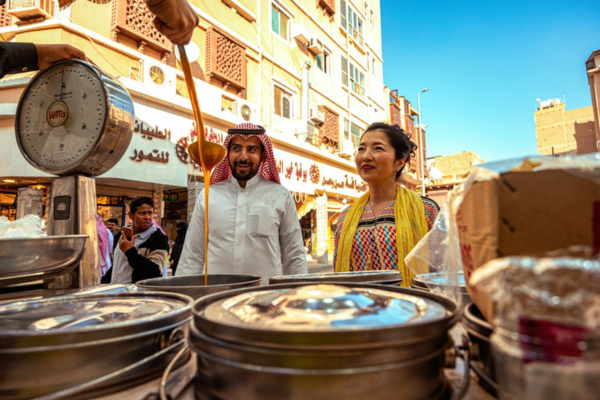
Saudi Arabia’s culture is respectful, welcoming, and increasingly global in its outlook. This is especially true for zones designed for international visitors. That said, certain behaviors might clash with local norms.
Public displays of affection, entering mosques without permission, or taking unsolicited photos of locals—especially women—are considered intrusive. They are regulated by law in public and religious zones.
The mistake is not showing curiosity, but missing context. For example, tourist areas reflect modern, open environments. They are more open and globally accustomed. Mixed-gender interaction is common, dress is more relaxed, and entertainment venues host global events.
Knowing where you are—culturally and geographically—matters. This is why walking hand-in-hand might feel acceptable in a music festival zone, but not at a historic mosque.
But these freedoms don’t automatically apply in older districts, religious zones, or rural towns.
Respecting spatial and social context is key to successful travel in Saudi Arabia.
Most missteps come from assuming uniformity across regions. But in fact, the country balances tradition and innovation with location-specific nuance.
Overplanning or Underestimating Travel Time
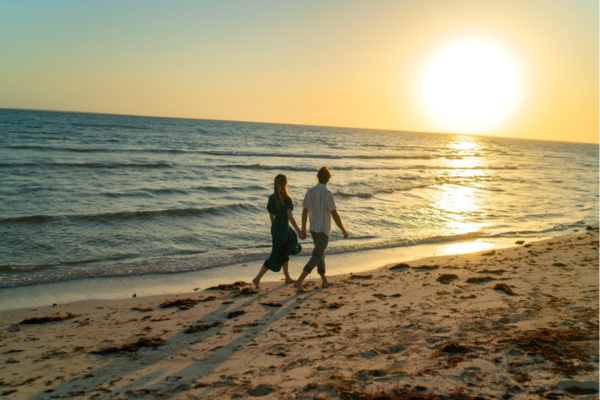
Another key travel mistake is underestimating Saudi Arabia’s geographic scale. With over 2.1 million km² of land, it takes time to move between cities and regions.
Efficient travel across Saudi Arabia depends on flight schedules, festival calendars, and regional weather. Trying to fit Riyadh, AlUla, Jeddah, and the Empty Quarter into one week is common but rarely sustainable. Travel times between cities range from 1.5-hour flights to 8-hour drives, depending on the route.
It is important to leave space for rest, exploration, and cultural absorption.
- Riyadh to AlUla is over 1,000 km—requiring a flight, not a drive (domestic airlines like Flynas and Saudia).
- Jeddah to Medina is ideal via the Haramain High-Speed Railway, not car rental
- The Empty Quarter desert tours need advance booking and guide coordination
Also, festival seasons (like Riyadh Season or AlUla Moments) affect accommodation and transport availability. So underestimating how these events impact local capacity is another mistake.
Successful travel in Saudi Arabia means pacing your itinerary. Avoid booking too many internal transfers, and instead allocate full days to regions. Urban mobility is strong, but regional travel requires realistic planning.
Navigating Food, Language, and Norms

Saudi Arabia’s food scene is a highlight for many travellers. But assuming every dish is tourist-friendly can be a mistake.
Many dishes—like kabsa, jareesh, or saleeg—are served in large shared portions, often without ingredient details in English. Allergies or dietary restrictions (especially vegan/vegetarian) should be communicated clearly.
Most staff in major cities understand basic English, but rural eateries may require Google Translate or photo menus.
Language barriers can also affect taxi directions, bookings, or customer service in smaller towns. Use apps like Tawakkalna, Absher, and Careem. These apps support English and simplify everything from ride-hailing to public service access.
First-time travellers sometimes assume every zone functions like a global capital. But Saudi Arabia’s charm lies in its local depth. By staying alert to communication styles, food customs, and subtle social cues, travellers can experience deeper, more rewarding interactions.
Final Advice: Your First-Time Travel Recap for Saudi Arabia
Smart travel in Saudi Arabia begins with calibrated expectations, not constraints. It is important not to recognise differences as obstacles. They can be seen as unique features of one of the world’s most ambitious and evolving travel destinations.
Final Checklist for First-Time Travellers
Before boarding your flight, verify the following essentials:
- ✅ eVisa approved, printed or saved digitally
- ✅ Passport valid for at least 6 months
- ✅ Travel insurance included with visa (usually bundled in eVisa fee)
- ✅ Accommodation bookings confirmed
- ✅ Modest clothing suitable for public spaces and climate
- ✅ Prescriptions in original packaging with doctor’s note
- ✅ Travel apps downloaded: Tawakkalna, Absher, Careem, Google Translate
- ✅ SIM card plan ready or purchased on arrival (STC, Zain, Mobily)
Flights, hotel check-ins, and domestic mobility are streamlined across major cities. Most major transport hubs now use biometric gates and digital boarding.
Encouragements and Realities of Travel in Saudi Arabia
Saudi Arabia is not just ready for tourism. Saudi Arabia is actively reshaping its global image through hospitality, entertainment, and infrastructure.
Urban areas like Riyadh Boulevard, Qiddiya, and Jeddah Season zones regularly host global concerts, sporting events, and art festivals. International travellers—especially first-timers—report a 91% satisfaction rate (Saudi Tourism Authority, 2023), reflecting strong alignment between expectations and real experiences.
At the same time, travelling here is different. You’ll notice a balance of tradition and progress. There are gender norms and local rules, but tourist zones are welcoming, multilingual, and adaptive to international standards.
Helpful Arabic Phrases for Travellers
Yes, English is widely used in cities and tourist zones. However, learning a few Arabic basics enhances your travel experience and earns appreciation from locals.
Here are phrases to support first-time communication:
|
English |
Arabic (Transliteration) |
|
Hello |
As-salaamu ʿalaykum |
|
Thank you |
Shukran |
|
Yes / No |
Naʿam / Laa |
|
How much? |
Kam at-thaman? |
|
Where is the bathroom? |
Ayna al-ḥammām? |
|
I don’t speak Arabic |
Lā atakallam al-ʿArabiyya |
|
Please |
Min faḍlik |
These are useful in taxis, shops, or smaller towns, where English may be limited. Most signage in urban areas is bilingual.
Travel to Saudi Arabia with ShareTrip!
ShareTrip is an official partner of the Saudi Tourism Authority (STA), a government-established entity in Saudi Arabia.
Apart from flight, visa, and hotels and resorts for Saudi Arabia, you can also get customised tour packages that best suit your interests.
Download our app on Android or iOS, call us at +8809617617617, or email us to vacation@sharetrip.net for more information on travelling to Saudi Arabia.


